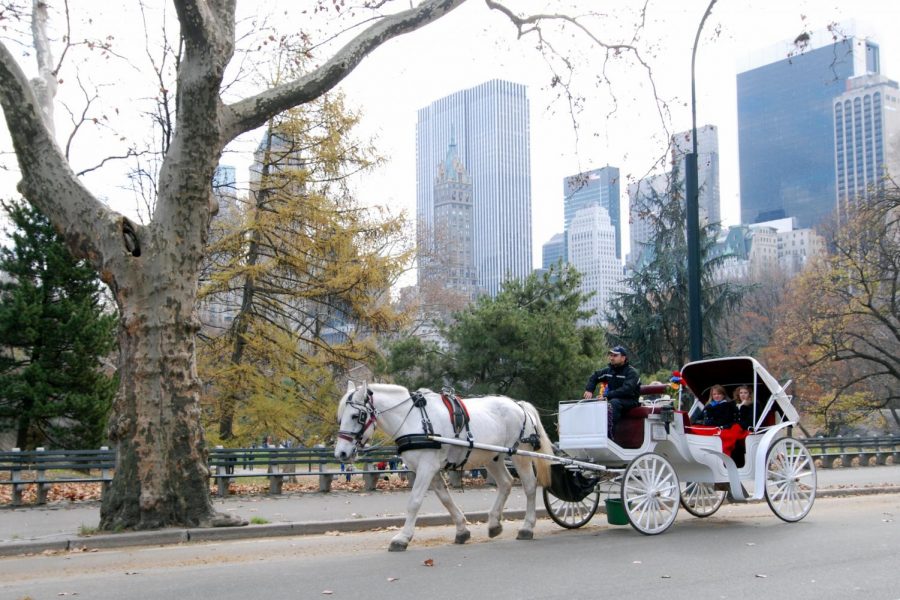New York’s horse-drawn carriages need to be put to pasture
October 9, 2021
New York City’s Central Park is known by locals and tourists alike as a sprawling place with numerous walkways, a theater for summer shows and the perfect picnic destination with friends. Before even entering it, however, the visitor immediately is hit by an unfamiliar sight amid the speeding cars and high-rise buildings: a horse-drawn carriage.
Its driver, noticeably as fatigued as the horse, calls one and all over to take a ride by an archaic means of transportation to see the wonders of Central Park. New York must stop this cruel practice on both the driver and the horse by allowing the horse to live peacefully and the driver to find employment elsewhere.
New York City has 68 registered horse-drawn carriages, according to the Transport Workers Union. There are laws in place to protect the horses from abuse by requiring veterinary checks twice a year and an age minimum of 26 to acquire a license, but the idea of forcing the horses to work every day for hours on end is inherently abusive.
Plus, these laws haven’t stopped horses from collapsing before, whether it be from fatigue, hunger, high temperatures or car accidents. There is no reason to subject these horses to such a dangerous job in the first place since the advent of cars in the early 20th century.
Now, it is easy to call for a disbanding of the 163-year-old industry in New York City, but one must consider how the drivers would be impacted, especially during the COVID-19 pandemic.
These drivers were left unemployed in March 2020 because their jobs were not considered to be essential. They returned with their horses seven months later in October 2020, and many believed that the horse-drawn carriages, a well-known component of New York City’s image, gave hope to a return to normalcy after the pandemic.
“The drivers and horses provide so much color and are such a familiar part of the New York City landscape, just the sight of them will bring smiles to peoples’ faces,” carriage driver Colm McKeever said. “I believe that in my heart and soul. Manhattan has seen some dark days, but this is a step towards normalcy. It will give people a little hope that we will get out of this mess.”
These drivers depend on horse rides for income and considering the high cost of a ride per hour depending on the carriage, they do not want to leave the industry. Many of the drivers are also immigrants who learn about New York through the rides. For those with language barriers or a lack of education, it can be difficult to find work elsewhere.
To ban horse-drawn carriage rides in New York, would hurt these drivers.
“Everything they do is not about welfare of horses but about reducing our income and ability to care for our horses,” Christina Hansen, a carriage horse driver and spokesperson for Historic Horse-Drawn Carriages of Central Park, said to National Geographic.
Hence, New York would need to couple this change with an unemployment program for the drivers.
New York City Mayor Bill de Blasio and New York State Gov. Kathy Hochul announced two green energy infrastructure projects to power New York City with wind, solar and hydropower projects from upstate New York and Canada.”
To complete these projects, New York will need many laborers, so these drivers should be offered these good-paying union jobs. They will help the environment and the state by reducing fossil fuel reliance and carbon emissions, and will help disadvantaged communities have cleaner air, for instance.
By both offering alternative employment and letting the horses live out the rest of their lives in farms or animal sanctuaries, the physically-demanding tourist attraction of horse-drawn carriages can finally disappear from New York and leave a win-win situation for all parties.








Sue • Sep 24, 2022 at 5:13 pm
The carriage. Owners are pure evil. They live off of abusing horses, That fat lying Hansen is sickening.